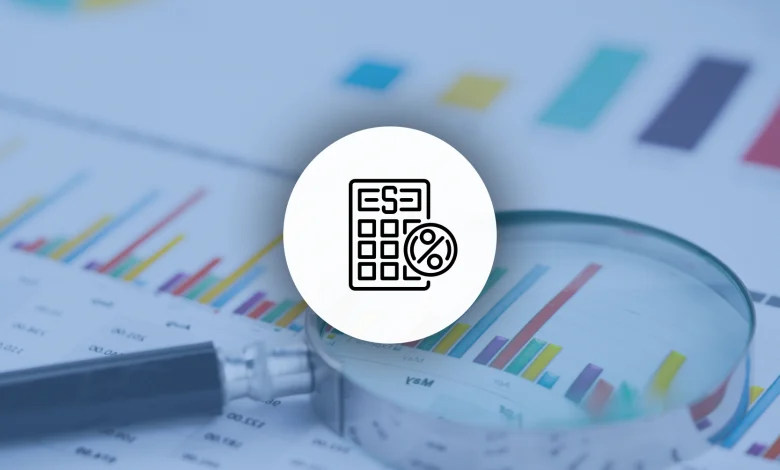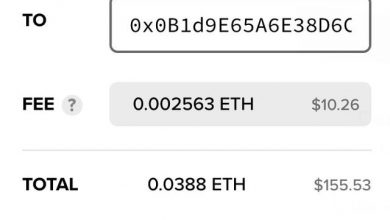All Aspects Price Earnings (P/E) Ratio Interpretation for Investors

Learn how to use the price-earnings (P/E) ratio and what you need to unravel the whole story the ratio tells you.
Some ratios exchange If we were to suggest that it is special for investors, there is no doubt that price earnings, or in short, P/E ratio, will be established in one of the top rows of these special ratios. As a matter of fact, the price-earnings ratio is one of the ratios that all market professionals look at when choosing shares.
The price-earnings ratio, which is very simple to calculate, becomes a very useful tool for stock market investors when interpreted and used correctly, and it is possible to evaluate a share or get an idea of whether a share is cheap or expensive even just by looking at the price-earnings ratio.
How is the Price Earnings Ratio Calculated?
Today, most investors do not calculate the price-earnings ratio themselves; because it can easily access this data from many analysis sites. However, it is important to be able to interpret it correctly rather than knowing the price-earnings ratio of the shares! Therefore, we also need to know how the price-earnings ratio is calculated.
In order to calculate the price-earnings ratio of a stock, we only need two data: the current market price of the stock and the company’s net earnings per share for the past year.
It is also possible to reach the same value with the following formula:
Historical vs. Prospective (Expected) Price Earnings Difference
Calculating the price-earnings ratio over realized net profit (last 1 year) brings us to the historical price-earnings ratio . In other words, by looking at the historical price earnings multiplier, we can see how many years of retained earnings are equal to the investment cost, given the company’s current earnings.
On the other hand, if we take the net profit figure used in the denominator of the formula as the expected (forecast/prospective) net profit at the end of the next 1 year, rather than realized, the ratio we get will give us the prospective price gain value.
This difference is extremely important especially for companies with high growth potential. Because companies that increase their profits from year to year may seem expensive according to the historical price-earnings ratio, but may be cheap according to the prospective P/E.
How is the Price Earnings Ratio Interpreted?
All Aspects Price Earnings (P/E) Ratio Interpretation for Investors
We’ve come to the heart of the matter! In fact, the price-earnings ratio tells us a lot just by its name: In the current situation, we can evaluate how many times the annual profit of the stock is priced by looking at the price-earnings ratio.
To assess whether a stock is trading at a premium, we can compare it to the average P/E ratio of similar companies, or we can directly use the company’s own historical P/E ratio average; In fact, such an approach may yield better and more accurate results.
In a similar company comparison, for example, we can conclude that a stock traded at 10x P/E is priced twice as much as a stock traded at 5x P/E. However, another important point to be aware of here is not to make the mistake of comparing apples and oranges with each other! So, what should we pay attention to when interpreting the P/E ratio in order not to make this mistake?
What are the Factors Affecting the Price Earnings Ratio?
All Aspects Price Earnings (P/E) Ratio Interpretation for Investors
There are many different reasons why a particular stock might trade with a low or high P/E multiplier.
Some of the reasons that may increase the P/E multiplier of a stock compared to its peers and cause it to be traded at a premium are as follows:
- High growth potential of the company
- Stable performance and predictable profitability of the company
- High corporate governance compliance of a company
- The dominance of the business in the industry and the industry leadership
- Efficient business models with efficient use of assets
In addition, the weak appearance in the above elements can be considered as an explanatory factor for the low P/R multiplier, and the following can be listed among the reasons that may underlie the low P/E multiplier:
- Unpredictable and unstable company earnings
- Weak corporate governance practices and lack of trust in management
- Company’s low growth potential or decline in growth prospects
Is Price Earnings Ratio Appropriate for Every Sector?
The price-earnings ratio can tell us something about every operating company, but that doesn’t mean it’s equally suitable for every industry. For example;
- For banking, P/D ratio can be preferred instead of P/E.
- It can be evaluated together with the FD/EBITDA ratio for manufacturing and heavy industry enterprises.
- Asset based valuation methods can be used instead of market multipliers for real estate and investment companies and holdings (usually fixed asset weighted companies).
What Should The Price Earning Ratio Be?
All Aspects Price Earnings (P/E) Ratio Interpretation for Investors
You divided the share price by the company’s annual earnings and found the P/E ratio, but what should the price-earnings ratio be so that this ratio is attractive to us.
Indeed, valuation is always relative, so we can’t set an absolute benchmark for either the P/E ratio or other market multipliers: That’s why we need to have a reference when valuing shares on the P/E ratio. In addition, it is important that we take into account the factors that affect P/E while doing this. Therefore, as with all market multipliers, the P/E ratio can be taken as the reference value of the company’s past P/E average or median value, or the P/E average of the entire market or the sector in which the company is located.
Note: Aswath Damodaran , in his “ Small Book for Valuation ”, uses multiple regression to take into account the factors affecting the P/E while choosing stocks with the P/E ratio, thus reaching the adjusted P/E ratio based on risk and growth. .
Price Earnings Ratio is a Function of Variables such as Growth and Risk Perception
Stocks priced with a low P/E multiplier relative to the expected growth in earnings offer potential in this respect.investmentcan be considered as opportunities. In essence, a low current P/E ratio relative to the reference P/E ratio that cannot be explained by factors affecting the P/E ratio, such as expected growth or risk perception, may be considered good investment timing.
In addition, the general state of the economy will cause changes in the norms of market multipliers such as P/E. Thus, in a given year, for example, the 15x P/E multiplier may be cheap, while the same P/E may become expensive or reasonable in another economic conjuncture. For example, falling interest rates in the market and periods of acceleration in economic growth may also push up the overall P/E ratio in the market.
The Relationship Between Price Earnings Ratio and Market Book Value
Multiplying the P/E ratio by the return on equity gives us the market book value ratio.
As you can see in the equation above, the denominator of the P/E ratio and the “net profit” in the return on equity ratio are common, so the value we get when multiplied by each other gives us the P/D ratio. Accordingly, while the P/D ratio is constant, a falling P/E ratio indicates increased return on equity, which is desirable.
Note: Value investor Benjamin Graham advises defensive investors to pay attention to whether the price-earnings ratio multiplied by the market book value ratios exceeds 22.5 when selecting shares. ( Graham, Benjamin. The Smart Investor, Epsilon, 390.)
Advantages and Disadvantages of Using Price Earnings Ratio
The price-earnings ratio is one of the ratios used in the market-based valuation method, and a peer valuation can be made using this ratio. For example, if a company with an industry price earnings average of 5x has an annual net profit of 2 liras, the fair value of the company is calculated as 10 liras according to the equivalent multipliers.
It can be considered as the most important advantage of market multipliers, such as price-earnings ratio, that valuation of shares with such a method is extremely simple and the result is mathematically precise.
On the other hand, each company has its own expectations and risks, but the fact that these different expectations and risks are not included in the valuation made over the price-earnings ratio constitutes the weak wing of the valuation made over the pure price-earnings ratio.
However, there is a way to partially eliminate this disadvantage. How Does? Then let me introduce you to the PEG ratio.
From P/K to PEG Ratio… What is PEG Ratio and How Is It Calculated?
We mentioned that it can often be misleading to think of the P/E ratio independently of the company’s growth prospects; because it is a fact that growth investors are willing to pay more for a share for potential growth! Therefore, companies with higher growth expectations tend to have higher P/E ratios.
At this point, “Growth at a reasonable price or growth at a reasonable price (GARP – Growth at a reasonable price )?” the question arises. If your preference is for the latter, the PEG ratio can be very useful for you.
When we divide the P/E ratio by the date or expected growth rate, we get the PEG ratio.
How is the PEG Ratio Interpreted?
If the growth rate of profits is higher than the P/E multiplier, the PEG ratio takes a value less than 1, and in this case, it is believed that the stock is priced cheap despite the growth expectation.
Above are the P/E and PEG ratios of two different companies. When we look at the P/E, we see that company A is priced cheaper than company B. However, when we switch to the PEG ratio by taking into account the growth expectations of both companies’ earnings, this time we encounter the fact that company B is actually cheaper than company A.
For a value investor, company A may nevertheless seem more attractive than B; because it chases the requirement that a company be cheap in the face of the current situation rather than expectations. But even in the same situation, a growth investor’s choice would be company B, as it contains higher growth prospects despite higher P/E.
Moreover, company B’s price, together with the prospect of potential growth, appears much cheaper than A; because the PEG ratio is below 1. In other words, company B is growing much faster than A, and still remains reasonable in terms of price.
PEG ratio or P/K ratio?
All Aspects Price Earnings (P/E) Ratio Interpretation for Investors
The reason I opened this topic is the famous investment bank Morgan Stanley’s signing of a study directly related to this subject!
This study to determine which of the PEG and P/E ratios gives the most successful results is based on a 10-year observation on Wall Street. Accordingly, according to the result obtained by following 1000 stocks, it was seen that the annual average return of the stocks with low PEG ratio was 21.7%, while the annual average return of the portfolio selected over the P/E ratio remained at 14.9%. (Erolgaç, Yılmaz. Professional Money Management in the 21st Century, Scala, 105.)
By the way, before concluding our article, let’s underline that it is always necessary to take into account the possibility that conducting research in different markets and under changing conditions may produce different results, while coming to a conclusion based on the results of the studies on the markets.



